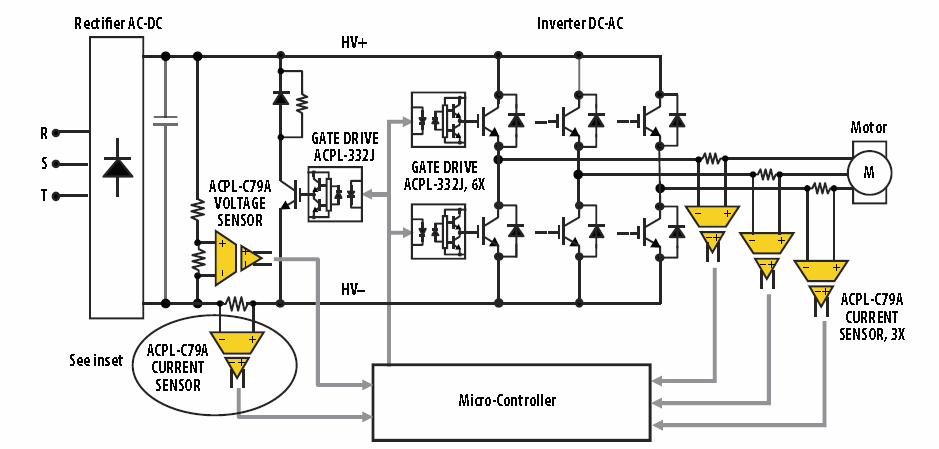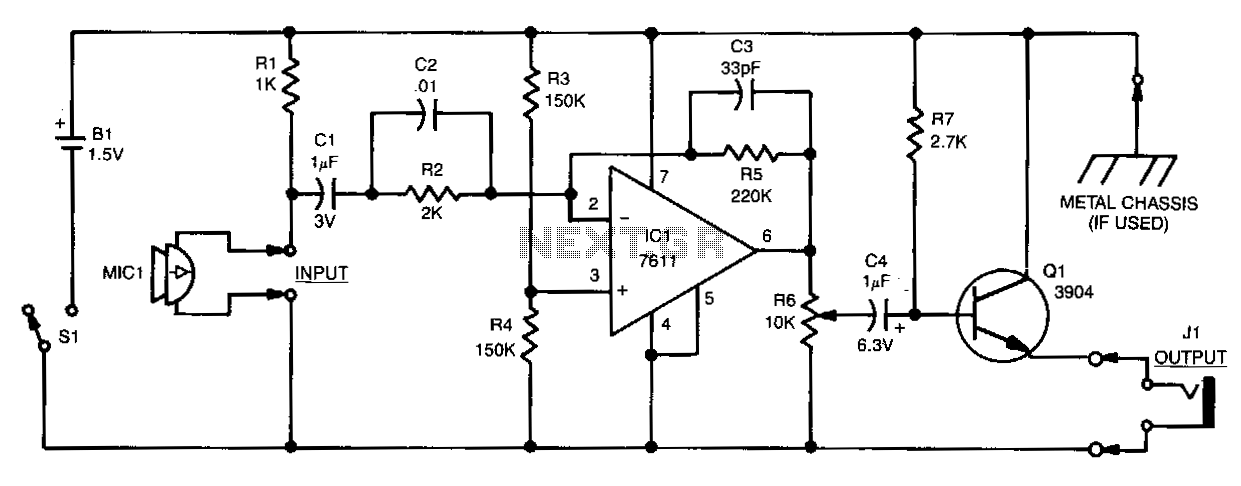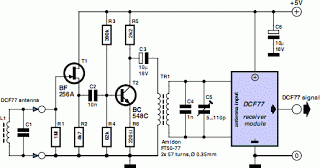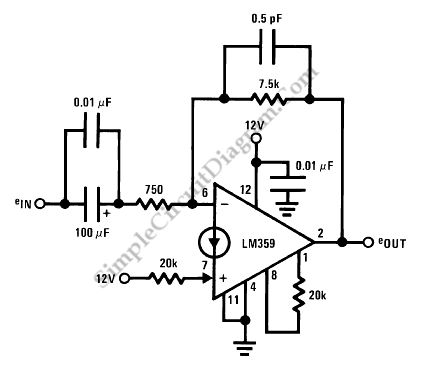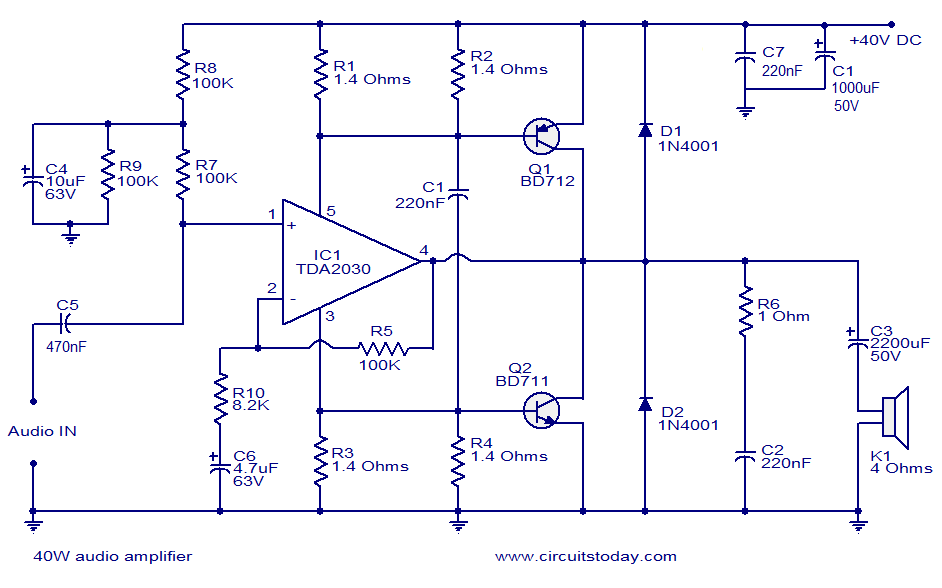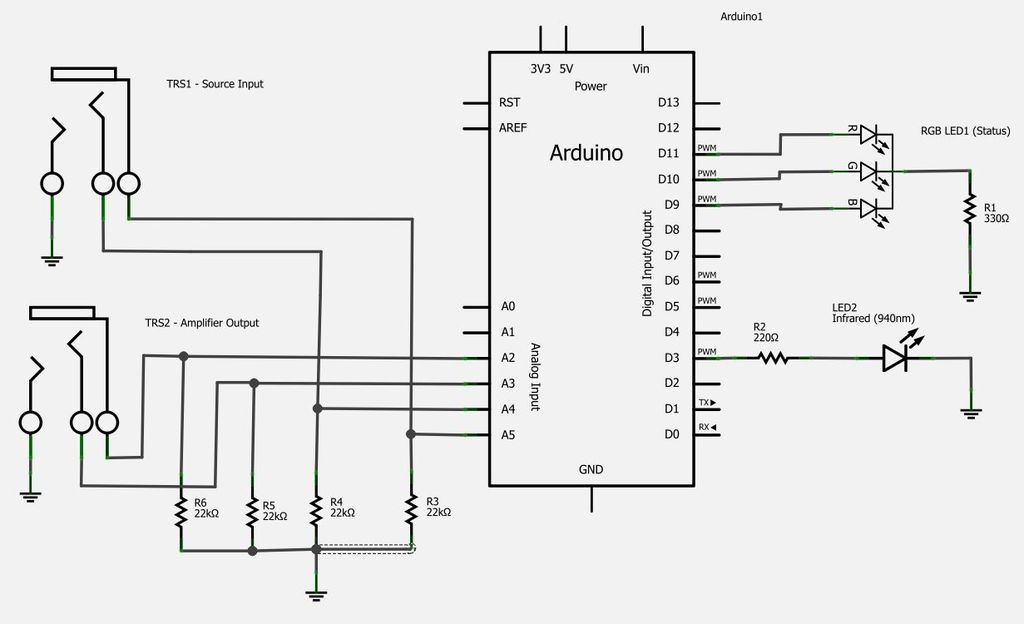
Compact High-Performance 12V 20W Stereo Amplifier
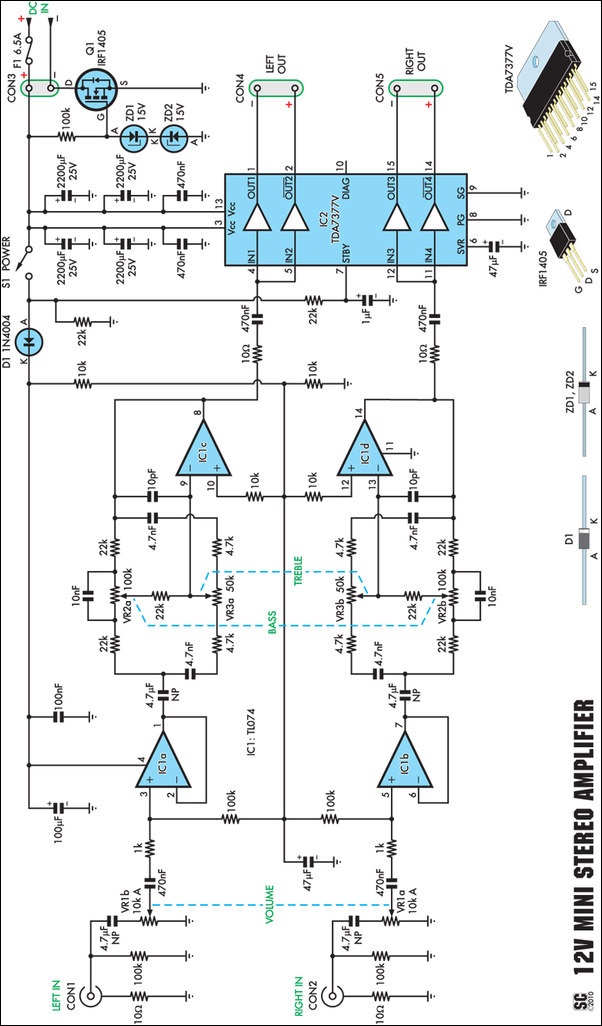
Amplifiers that operate on 12V DC typically do not produce significant power and are often not high fidelity. However, this compact stereo amplifier meets the requirements for power and low distortion. With a supply voltage of 14.4V, it can deliver 20 watts per channel into 4-ohm loads at clipping, while harmonic distortion at lower power levels is generally less than 0.03%. This amplifier is an excellent project for those seeking a small stereo amplifier that can function from a 12V battery. It is particularly suitable for buskers in need of a portable yet powerful amplifier that can operate from an SLA battery, and it can be utilized wherever 12V DC is accessible, such as in cars, recreational vehicles, or remote homes. Its DC operation makes it an ideal project for beginners or students, eliminating concerns about 240VAC power supply. The amplifier can be powered by either a 12V battery or a DC plug pack. Despite its compact and straightforward design, the performance is commendable. Listening tests using various compact discs have yielded impressive sound quality. A similar 12V power amplifier design was presented in May 2001, but the current design surpasses it in terms of lower distortion and enhanced signal-to-noise ratio. The previous unit, which utilized two TDA1519A ICs, exhibited distortion figures exceeding 1% and a signal-to-noise ratio of only -69dB unweighted. The new design employs the TDA-7377 power amplifier IC, resulting in total harmonic distortion (THD) approximately 50 times better than the earlier model, with typical THD around 0.03% or less. It also delivers greater output power due to improved output transistors in the new IC, while maintaining low idle power consumption of just over 1W. Consequently, if not pushed excessively, the amplifier remains cool and conserves battery life. The IC includes self-protection circuitry, making it robust; it will self-limit or shut down in case of overheating, and the outputs are deactivated if shorted. With a 12V supply, the maximum voltage swing achievable by a conventional solid-state power amplifier is ±6V, resulting in only 4.5W RMS into 4 ohms and 2.25W RMS into 8 ohms, not accounting for losses in the output transistors. Even with a DC supply of approximately 14.4V (the maximum typically available from a 12V car battery), the power output is limited to 6.48W and 3.24W for 4-ohm and 8-ohm loads, respectively. There are three common solutions to enhance power output. The first involves boosting the supply voltage using a switch-mode DC converter, which increases the amplifier's cost and complexity. The second method is to lower the speaker impedance; some car speakers have an impedance as low as 2 ohms, allowing for double the power output at the same supply voltage. However, this amplifier is not restricted to 2-ohm speakers.
The amplifier circuit design incorporates the TDA-7377 IC, which is central to its performance capabilities. The TDA-7377 is a dual power amplifier IC specifically designed for automotive and portable audio applications. Its architecture allows for efficient power delivery while minimizing distortion. The input stage of the amplifier typically consists of a differential amplifier configuration, which helps in achieving high common-mode rejection and better signal fidelity.
The output stage is designed to drive loads with low distortion characteristics, ensuring that the audio output remains clean even at higher volumes. The amplifier's feedback loop is carefully designed to stabilize the gain and reduce any potential feedback-induced distortion, further enhancing the audio quality.
Power management is also a critical aspect of this design, as the amplifier operates efficiently with low idle power consumption. This is particularly advantageous for battery-powered applications, where energy conservation is essential. The self-protection features integrated into the TDA-7377 further ensure reliability, preventing damage from overheating or short-circuit conditions.
In terms of connectivity, the amplifier can accommodate standard audio input signals, allowing for easy integration with various audio sources. The output terminals are designed to connect with speakers of varying impedances, ensuring versatility in application.
Overall, this compact stereo amplifier offers an impressive combination of power, efficiency, and sound quality, making it suitable for a wide range of audio applications, especially in portable and automotive environments.Amplifiers which run from 12V DC generally don`t put out much power and they are usually not hifi as well. But this little stereo amplifier ticks the power and low distortion boxes. With a 14. 4V supply, it will deliver 20 watts per channel into 4-ohm loads at clipping while harmonic distortion at lower power levels is typically less than 0.
03%. Th is is an ideal project for anyone wanting a compact stereo amplifier that can run from a 12V battery. It could be just the ticket for buskers who want a small but gutsy amplifier which will run from an SLA battery or it could used anywhere that 12V DC is available in cars, recreational vehicles, remote houses with 12V DC power or where ever.
Because it runs from DC, it will be an ideal beginner`s or schoolie`s project, with no 240VAC power supply to worry about. You can run it from a 12V battery or a DC plugpack. But while it may be compact and simple to build, there is no need to apologise for just average performance.
In listening tests from a range of compact discs, we were very impressed with the sound quality. Long-time readers might recall that we presented a similar 12V power amplifier design back in May 2001. It was a similar configuration to this one but it is now completely over-shadowed by the much lower distortion and greatly improved signal-to-noise ratio of this new design.
In fact, let`s be honest: the previous unit is not a patch on this new design. It used two TDA1519A ICs which resulted in distortion figures above 1% virtually across the board and a signal-to-noise ratio of only -69dB unweighted. However, by using the TDA 7377 power amplifier IC and making some other improvements, the THD (total harmonic distortion) of the new design is about 50 times better than the older unit (see performance graphs for details).
The bottom line is that the THD under typical conditions is around just 0. 03% or less. It is also able to deliver more output power due to the improved output transistors in the new power amplifier IC. In addition, its idle power consumption is low not much more than 1W. As a result, if you don`t push it too hard it will run cool and won`t drain the battery too quickly. And because the IC has self-protection circuitry, it`s just about indestructible. It will self-limit or shut down if it overheats and the outputs are deactivated if they are shorted. With a 12V supply, the largest voltage swing a conventional solid-state power amplifier can generate is ±6V.
This results in a meagre 4. 5W RMS into 4O and 2. 25W RMS into 8O, without considering losses in the output transistors. Even if the DC supply is around 14. 4V (the maximum that can normally be expected from a 12V car battery), that only brings the power figures up to 6. 48W and 3. 24W for 4O and 8O loads respectively still not really enough. There are three common solutions to this problem. The first is to boost the supply voltage using a switchmode DC converter. This greatly increases the cost and complexity of the amplifier but it is one way of getting a lot of power from a 12V supply.
However, we wanted to keep this project simple and that rules out this technique. There are variations on the boosting method, such as the class H architecture used in the TDA1562Q IC featured in the Portapal PA Amplifier (SILICON CHIP, February 2003). It is able to achieve 40W/channel but with >0. 1% THD. In that case, the amplifier output itself provides the switching for a charge pump. The second method is to lower the speaker impedance. Some car speakers have an impedance as low as 2O, which allows twice as much power to be delivered at the same supply voltage.
However, we don`t want to restrict this amplifier to 2O loudspeakers. 🔗 External reference
The amplifier circuit design incorporates the TDA-7377 IC, which is central to its performance capabilities. The TDA-7377 is a dual power amplifier IC specifically designed for automotive and portable audio applications. Its architecture allows for efficient power delivery while minimizing distortion. The input stage of the amplifier typically consists of a differential amplifier configuration, which helps in achieving high common-mode rejection and better signal fidelity.
The output stage is designed to drive loads with low distortion characteristics, ensuring that the audio output remains clean even at higher volumes. The amplifier's feedback loop is carefully designed to stabilize the gain and reduce any potential feedback-induced distortion, further enhancing the audio quality.
Power management is also a critical aspect of this design, as the amplifier operates efficiently with low idle power consumption. This is particularly advantageous for battery-powered applications, where energy conservation is essential. The self-protection features integrated into the TDA-7377 further ensure reliability, preventing damage from overheating or short-circuit conditions.
In terms of connectivity, the amplifier can accommodate standard audio input signals, allowing for easy integration with various audio sources. The output terminals are designed to connect with speakers of varying impedances, ensuring versatility in application.
Overall, this compact stereo amplifier offers an impressive combination of power, efficiency, and sound quality, making it suitable for a wide range of audio applications, especially in portable and automotive environments.Amplifiers which run from 12V DC generally don`t put out much power and they are usually not hifi as well. But this little stereo amplifier ticks the power and low distortion boxes. With a 14. 4V supply, it will deliver 20 watts per channel into 4-ohm loads at clipping while harmonic distortion at lower power levels is typically less than 0.
03%. Th is is an ideal project for anyone wanting a compact stereo amplifier that can run from a 12V battery. It could be just the ticket for buskers who want a small but gutsy amplifier which will run from an SLA battery or it could used anywhere that 12V DC is available in cars, recreational vehicles, remote houses with 12V DC power or where ever.
Because it runs from DC, it will be an ideal beginner`s or schoolie`s project, with no 240VAC power supply to worry about. You can run it from a 12V battery or a DC plugpack. But while it may be compact and simple to build, there is no need to apologise for just average performance.
In listening tests from a range of compact discs, we were very impressed with the sound quality. Long-time readers might recall that we presented a similar 12V power amplifier design back in May 2001. It was a similar configuration to this one but it is now completely over-shadowed by the much lower distortion and greatly improved signal-to-noise ratio of this new design.
In fact, let`s be honest: the previous unit is not a patch on this new design. It used two TDA1519A ICs which resulted in distortion figures above 1% virtually across the board and a signal-to-noise ratio of only -69dB unweighted. However, by using the TDA 7377 power amplifier IC and making some other improvements, the THD (total harmonic distortion) of the new design is about 50 times better than the older unit (see performance graphs for details).
The bottom line is that the THD under typical conditions is around just 0. 03% or less. It is also able to deliver more output power due to the improved output transistors in the new power amplifier IC. In addition, its idle power consumption is low not much more than 1W. As a result, if you don`t push it too hard it will run cool and won`t drain the battery too quickly. And because the IC has self-protection circuitry, it`s just about indestructible. It will self-limit or shut down if it overheats and the outputs are deactivated if they are shorted. With a 12V supply, the largest voltage swing a conventional solid-state power amplifier can generate is ±6V.
This results in a meagre 4. 5W RMS into 4O and 2. 25W RMS into 8O, without considering losses in the output transistors. Even if the DC supply is around 14. 4V (the maximum that can normally be expected from a 12V car battery), that only brings the power figures up to 6. 48W and 3. 24W for 4O and 8O loads respectively still not really enough. There are three common solutions to this problem. The first is to boost the supply voltage using a switchmode DC converter. This greatly increases the cost and complexity of the amplifier but it is one way of getting a lot of power from a 12V supply.
However, we wanted to keep this project simple and that rules out this technique. There are variations on the boosting method, such as the class H architecture used in the TDA1562Q IC featured in the Portapal PA Amplifier (SILICON CHIP, February 2003). It is able to achieve 40W/channel but with >0. 1% THD. In that case, the amplifier output itself provides the switching for a charge pump. The second method is to lower the speaker impedance. Some car speakers have an impedance as low as 2O, which allows twice as much power to be delivered at the same supply voltage.
However, we don`t want to restrict this amplifier to 2O loudspeakers. 🔗 External reference
